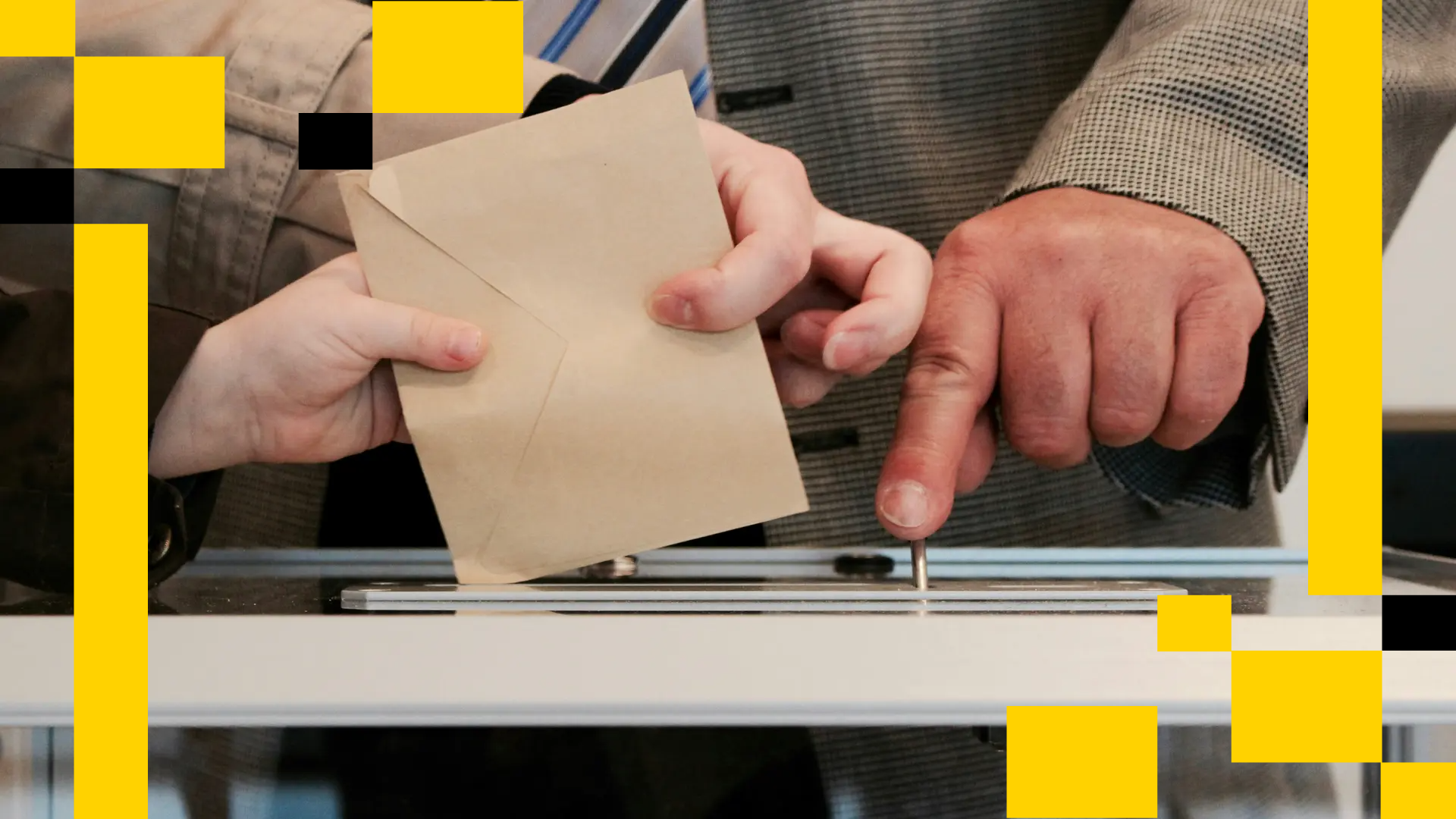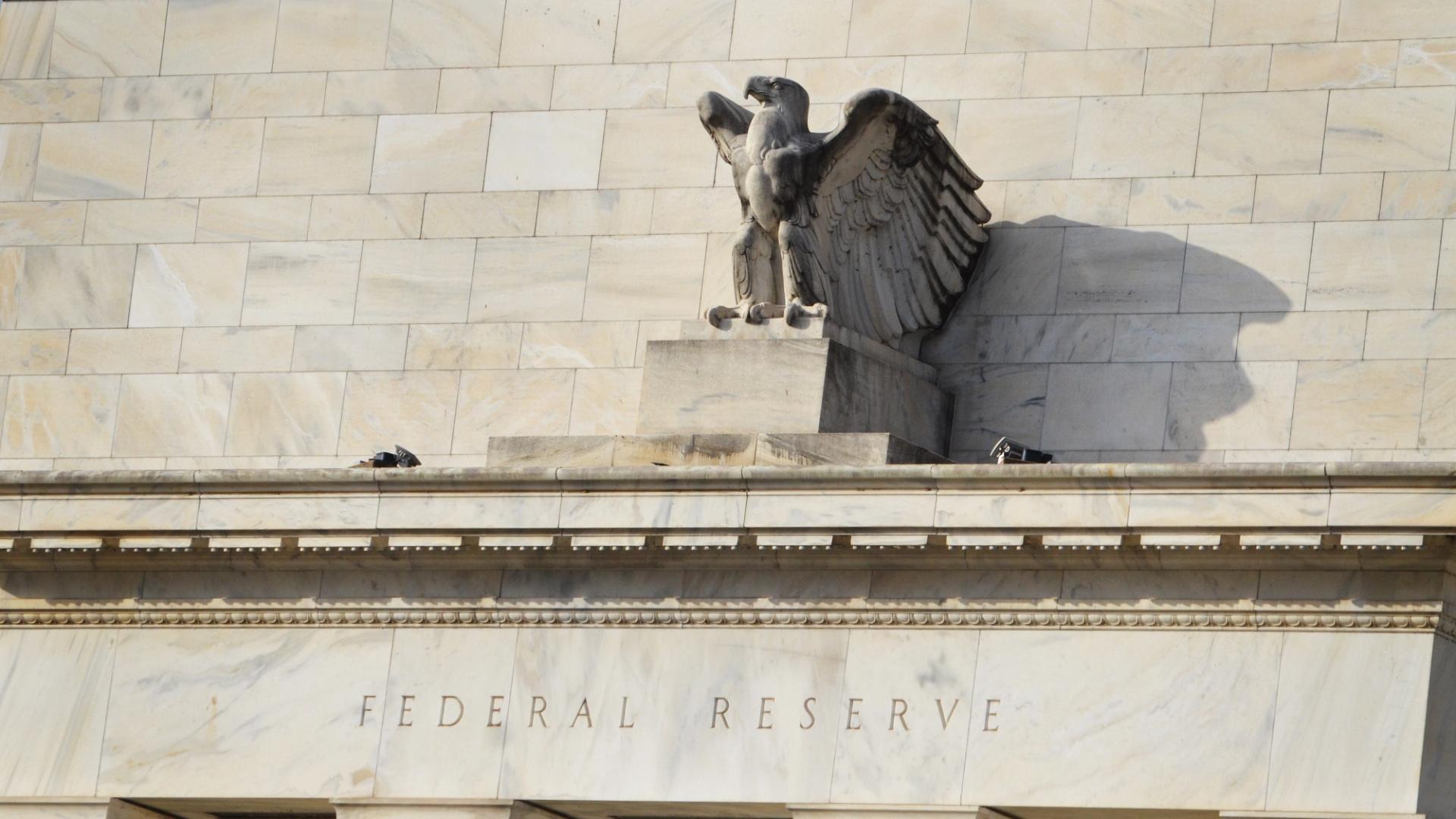Uncategorized
Figment CEO Lorien Gabriel’s Big Bet on Staking Has Paid Off

Lorien Gabel has spent decades building internet infrastructure companies, from ISPs to cloud security firms. In 2018, recognizing the transformative potential of proof-of-stake networks, he co-founded Figment, which has since become one of the world’s largest independent staking providers, offering technology and services that enable users to stake their tokens without having to use a centralized exchange or custodian.
Today, the company manages $15 billion in assets and serves over 500 institutional clients.
This series is brought to you by Consensus Hong Kong. Come and experience the most influential event in Web3 and Digital Assets, Feb.18-20. Register today and save 15% with the code CoinDesk15.
Here, Gabriel, who will be a speaker at Consensus Hong Kong, discusses Figment’s expansion into Asia, bitcoin staking experiments and his company’s careful process for deciding which new crypto networks to support.
This interview has been condensed and lightly edited for clarity.
What led you to start Figment?
This is the fourth company my co-founders and I have built together over three decades. Our previous ventures were all in internet infrastructure. When we started exploring blockchain in 2018, staking was barely a thing — Tezos had launched, and Ethereum was still only discussing it. But we saw a natural alignment between our expertise in network security, cloud infrastructure and scaling B2B solutions and what proof-of-stake (PoS) could become. If PoS gained traction, we believed our experience in building secure, institutional-grade networks would be invaluable.
We originally planned to start a fund, and now we do have a VC fund. But the fund didn’t come first — the staking infrastructure company did, and then we launched Figment Capital. We basically took a flyer on proof-of-stake, believing it had some advantages over proof-of-work, and we were lucky enough that it actually worked and took off.
How large is Figment now?
We currently manage $15 billion in staking assets and serve 500 institutional clients. While employee count isn’t always a meaningful metric, we have about 130 employees and expect to reach 150 by year-end. Asia is our next big expansion focus. We opened our Singapore office last year, and we’re adding Japan, Hong Kong and other key markets. While North America remains our base, Asia’s demand for staking services is growing rapidly.
What challenges do you see to Asia’s adoption of staking compared to other regions?
First, Asia isn’t one market — it’s a collection of vastly different economies and regulatory landscapes. Japan, Indonesia and Korea, for example, have distinct business cultures, adoption levels and regulatory frameworks. We’ve always been compliance-focused, working only with institutional clients rather than retail users. But in Asia, compliance varies widely by country. Unlike the U.S., where you primarily navigate SEC and CFTC rules, each Asian market has its own regulators and policies.
Also, Western companies often fail when expanding into Asia by not understanding local hiring, scaling strategies or customer behavior. I was born in Kuala Lumpur, and I’ve seen North American firms overinvest too quickly or misread market needs. That’s why we started small in Singapore with three people, so we could learn before scaling.
Education is another challenge. In many Asian markets, staking is not well-defined and is sometimes misconstrued as DeFi lending. We spend a lot of time at conferences, client meetings and media interviews explaining what staking is and why institutions should consider it over riskier yield-generating alternatives.
What has been the biggest challenge in scaling your business, and how did you overcome it?
The hardest part of any startup is the “zero to one” phase — figuring out whether an idea will work, what customers need and how the business model will evolve.
Early on, we ran multiple experiments — we had a remote procedure call (RPC) infrastructure business, a developer knowledge portal and different revenue streams. But once we found a strong product-market fit in staking, we shut down the rest and focused entirely on scaling one core offering.
The second major challenge is crypto’s volatility. Our business operates like a mix between a data center company, a fund and a software business, but with variable pricing in dozens of volatile digital assets. That complicates planning. I joke that my unofficial title is “Chief Stoic” — I don’t get too euphoric when markets are booming, and I don’t panic when things go south. Whether it’s FTX’s collapse or bitcoin hitting $100,000, we focus on long-term execution.
Are you seeing increased institutional interest in staking in Asia?
Yes, institutional adoption is accelerating, particularly from banks and telecoms. We’ve had institutional equity investors from Asia for a while — big names like Monex and B Capital—but over the last year, we’ve seen more traditional financial institutions actively entering staking. Each market has its own dominant exchanges and custodians, and we often partner with them rather than dealing with end users. As more banks explore staking, we expect adoption to snowball — similar to how institutions in the U.S. started cautiously investing in staking before scaling operations.
How do you decide which tokens to support for staking? Do Asian markets influence this?
We have an evaluation framework that we’ve refined over the past six years. Since we can only support a limited number of new tokens each year, we have to be selective — last year, we added support for 12 or 13, which is quite a lot given the complexity of each integration. Right now, we’re supporting around 40 networks, but every new addition requires careful analysis.
The process starts with the basics: is this a real project or a scam? Does it have a strong thesis and a team capable of executing it? In many ways, it mirrors a VC framework. From there, we dig deeper, speaking with the foundation and founders, assessing the level of custody support available — since that’s crucial for institutional adoption — and evaluating the broader ecosystem.
At some point, though, when you have 20 strong candidates but can only support 10, you have to make a bet. Sometimes we get it right, sometimes we don’t. Over the years, we’ve seen enough network launches to develop a strong intuition about what works and what doesn’t. We try to offer guidance to projects where we can, though ultimately, it’s up to them whether they take our input.
Customer demand is another factor in our decision-making, and the Asian market is an important part of this. Occasionally, a major institutional client will request support for a project we might not have otherwise considered — or even heard of — so we conduct an expedited evaluation. In some cases, we’ve had to tell clients no, either because we don’t see the project as legitimate or we suspect it might be a scam. Those are tough conversations, but they’re necessary. Ultimately, we also look at how many of our clients are likely to hold or stake a given token, which plays into our final decision.
With many Asian investors seeking high-yield opportunities, how does Figment ensure competitive returns while staying secure and reliable?
Staking is not the highest-yield activity in crypto, but it’s the safest way to earn yield without counterparty risk. We focus on providing the highest risk-adjusted staking rewards. While some providers chase higher returns by cutting corners (e.g., ignoring OFAC compliance or MEV risks), our clients — mainly institutions — prioritize security and compliance.
In crypto, staking is the equivalent of a 10-year Treasury bond — it’s the stable, reliable option compared to high-risk DeFi strategies. Some investors prefer liquidity pooling or lending for higher yields, but institutions typically choose staking for its security.
Are there any staking-related trends or innovations in Asia that excite you?
Some of the most exciting trends in staking right now include liquid staking and re-staking, with EigenLayer leading the charge globally in these areas and having a strong presence in Asia. Bitcoin staking is another area of interest, with projects like Babylon exploring its potential, though demand remains uncertain. Additionally, we’re seeing new chains with significant Asian influence, such as BeraChain, which is rapidly growing its user base in the region. We’re actively supporting BTC staking while closely monitoring new staking models emerging from Asia.
Uncategorized
Asia Morning Briefing: Native Markets Wins Right to Issue USDH After Validator Vote

Good Morning, Asia. Here’s what’s making news in the markets:
Welcome to Asia Morning Briefing, a daily summary of top stories during U.S. hours and an overview of market moves and analysis. For a detailed overview of U.S. markets, see CoinDesk’s Crypto Daybook Americas.
Hyperliquid’s validator community has chosen Native Markets to issue USDH, ending a weeklong contest that drew proposals from Paxos, Frax, Sky (ex-MakerDAO), Agora, and others.
Native Markets, co-founded by former Uniswap Labs president MC Lader, researcher Anish Agnihotri, and early Hyperliquid backer Max Fiege, said it will begin rolling out USDH “within days,” according to a post by Fiege on X.
According to onchain trackers, Native Markets’ proposal took approximately 70% of validators’ votes, while Paxos took 20%, and Ethena came in at 3.2%.
The staged launch starts with capped mints and redemptions, followed by a USDH/USDC spot pair before caps are lifted.
USDH is designed to challenge Circle’s USDC, which currently dominates Hyperliquid with nearly $6 billion in deposits, or about 7.5% of its supply. USDC and other stablecoins will remain supported if they meet liquidity and HYPE staking requirements.
Most rival bidders had promised to channel stablecoin yields back to the ecosystem with Paxos via HYPE buybacks, Frax through direct user yield, and Sky with a 4.85% savings rate plus a $25 million “Genesis Star” project.
Native Markets’ pitch instead stressed credibility, trading experience, and validator alignment.
Market Movement
BTC: BTC has recently reclaimed the $115,000 level, helped by inflows into ETFs, easing U.S. inflation data, and growing expectations for interest rate cuts. Also, technical momentum is picking up, though resistance sits around $116,000, according to CoinDesk’s market insights bot.
ETH: ETH is trading above $4600. The price is being buoyed by strong ETF inflows.
Gold: Gold continues to trade near record highs as traders eye dollar weakness on expected Fed rate cuts.
Elsewhere in Crypto:
Uncategorized
BitMEX Co-Founder Arthur Hayes Sees Money Printing Extending Crypto Cycle Well Into 2026

Arthur Hayes believes the current crypto bull market has further to run, supported by global monetary trends he sees as only in their early stages.
Speaking in a recent interview with Kyle Chassé, a longtime bitcoin and Web3 entrepreneur, the BitMEX co-founder and current Maelstrom CIO argued that governments around the world are far from finished with aggressive monetary expansion.
He pointed to U.S. politics in particular, saying that President Donald Trump’s second term has not yet fully unleashed the spending programs that could arrive from mid-2026 onward. Hayes suggested that if expectations for money printing become extreme, he may consider taking partial profits, but for now he sees investors underestimating the scale of liquidity that could flow into equities and crypto.
Hayes tied his outlook to broader geopolitical shifts, including what he described as the erosion of a unipolar world order. In his view, such periods of instability tend to push policymakers toward fiscal stimulus and central bank easing as tools to keep citizens and markets calm.
He also raised the possibility of strains within Europe — even hinting that a French default could destabilize the euro — as another factor likely to accelerate global printing presses. While he acknowledged these policies eventually risk ending badly, he argued that the blow-off top of the cycle is still ahead.
Turning to bitcoin, Hayes pushed back on concerns that the asset has stalled after reaching a record $124,000 in mid-August.
He contrasted its performance with other asset classes, noting that while U.S. stocks are higher in dollar terms, they have not fully recovered relative to gold since the 2008 financial crisis. Hayes pointed out that real estate also lags when measured against gold, and only a handful of U.S. technology giants have consistently outperformed.
When measured against bitcoin, however, he believes all traditional benchmarks appear weak.
Hayes’ message was that bitcoin’s dominance becomes even clearer once assets are viewed through the lens of currency debasement.
For those frustrated that bitcoin is not posting fresh highs every week, Hayes suggested that expectations are misplaced.
In his telling, investors from the traditional world and those in crypto actually share the same premise: governments and central banks will print money whenever growth falters. Hayes says traditional finance tends to express this view by buying bonds on leverage, while crypto investors hold bitcoin as the “faster horse.”
His conclusion is that patience is essential. Hayes argued that the real edge of holding bitcoin comes from years of compounding outperformance rather than short-term speculation.
Coupled with what he sees as an inevitable wave of money creation through the rest of the decade, he believes the present crypto cycle could stretch well into 2026, far from exhausted.
Uncategorized
Bitcoin Bulls Bet on Fed Rate Cuts To Drive Bond Yields Lower, But There’s a Catch

On Sept. 17, the U.S. Federal Reserve (Fed) is widely expected to cut interest rates by 25 basis points, lowering the benchmark range to 4.00%-4.25%. This move will likely be followed by more easing in the coming months, taking the rates down to around 3% within the next 12 months. The fed funds futures market is discounting a drop in the fed funds rate to less than 3% by the end of 2026.
Bitcoin (BTC) bulls are optimistic that the anticipated easing will push Treasury yields sharply lower, thereby encouraging increased risk-taking across both the economy and financial markets. However, the dynamics are more complex and could lead to outcomes that differ significantly from what is anticipated.
While the expected Fed rate cuts could weigh on the two-year Treasury yield, those at the long end of the curve may remain elevated due to fiscal concerns and sticky inflation.
Debt supply
The U.S. government is expected to increase the issuance of Treasury bills (short-term instruments) and eventually longer-duration Treasury notes to finance the Trump administration’s recently approved package of extended tax cuts and increased defense spending. According to the Congressional Budget Office, these policies are likely to add over $2.4 trillion to primary deficits over ten years, while Increasing debt by nearly $3 trillion, or roughly $5 trillion if made permanent.
The increased supply of debt will likely weigh on bond prices and lift yields. (bond prices and yields move in the opposite direction).
«The U.S. Treasury’s eventual move to issue more notes and bonds will pressure longer-term yields higher,» analysts at T. Rowe Price, a global investment management firm, said in a recent report.
Fiscal concerns have already permeated the longer-duration Treasury notes, where investors are demanding higher yields to lend money to the government for 10 years or more, known as the term premium.
The ongoing steepening of the yield curve – which is reflected in the widening spread between 10- and 2-year yields, as well as 30- and 5-year yields and driven primarily by the relative resilience of long-term rates – also signals increasing concerns about fiscal policy.
Kathy Jones, managing director and chief income strategist at the Schwab Center for Financial Research, voiced a similar opinion this month, noting that «investors are demanding a higher yield for long-term Treasuries to compensate for the risk of inflation and/or depreciation of the dollar as a consequence of high debt levels.»
These concerns could keep long-term bond yields from falling much, Jones added.
Stubborn inflation
Since the Fed began cutting rates last September, the U.S. labor market has shown signs of significant weakening, bolstering expectations for a quicker pace of Fed rate cuts and a decline in Treasury yields. However, inflation has recently edged higher, complicating that outlook.
When the Fed cut rates in September last year, the year-on-year inflation rate was 2.4%. Last month, it stood at 2.9%, the highest since January’s 3% reading. In other words, inflation has regained momentum, weakening the case for faster Fed rate cuts and a drop in Treasury yields.
Easing priced in?
Yields have already come under pressure, likely reflecting the market’s anticipation of Federal Reserve rate cuts.
The 10-year yield slipped to 4% last week, hitting the lowest since April 8, according to data source TradingView. The benchmark yield has dropped over 60 basis points from its May high of 4.62%.
According to Padhraic Garvey, CFA, regional head of research, Americas at ING, the drop to 4% is likely an overshoot to the downside.
«We can see the 10yr Treasury yield targeting still lower as an attack on 4% is successful. But that’s likely an overshoot to the downside. Higher inflation prints in the coming months will likely cause long-end yields some issues, requiring a significant adjustment,» Garvey said in a note to clients last week.
Perhaps rate cuts have been priced in, and yields could bounce back hard following the Sept. 17 move, in a repeat of the 2024 pattern. The dollar index suggests the same, as noted early this week.
Lesson from 2024
The 10-year yield fell by over 100 basis points to 3.60% in roughly five months leading up to the September 2024 rate cut.
The central bank delivered additional rate cuts in November and December. Yet, the 10-year yield bottomed out with the September move and rose to 4.57% by year-end, eventually reaching a high of 4.80% in January of this year.
According to ING, the upswing in yields following the easing was driven by economic resilience, sticky inflation, and fiscal concerns.
As of today, while the economy has weakened, inflation and fiscal concerns have worsened as discussed earlier, which means the 2024 pattern could repeat itself.
What it means for BTC?
While BTC rallied from $70,000 to over $100,000 between October and December 2024 despite rising long-term yields, this surge was primarily fueled by optimism around pro-crypto regulatory policies under President Trump and growing corporate adoption of BTC and other tokens.
However, these supporting narratives have significantly weakened looking back a year later. Consequently, the possibility of a potential hardening of yields in the coming months weighing over bitcoin cannot be dismissed.
Read: Here Are the 3 Things That Could Spoil Bitcoin’s Rally Towards $120K
-

 Business11 месяцев ago
Business11 месяцев ago3 Ways to make your business presentation more relatable
-

 Fashion11 месяцев ago
Fashion11 месяцев agoAccording to Dior Couture, this taboo fashion accessory is back
-

 Entertainment11 месяцев ago
Entertainment11 месяцев ago10 Artists who retired from music and made a comeback
-

 Entertainment11 месяцев ago
Entertainment11 месяцев ago\’Better Call Saul\’ has been renewed for a fourth season
-

 Entertainment11 месяцев ago
Entertainment11 месяцев agoNew Season 8 Walking Dead trailer flashes forward in time
-

 Business11 месяцев ago
Business11 месяцев ago15 Habits that could be hurting your business relationships
-

 Entertainment11 месяцев ago
Entertainment11 месяцев agoMeet Superman\’s grandfather in new trailer for Krypton
-

 Entertainment11 месяцев ago
Entertainment11 месяцев agoDisney\’s live-action Aladdin finally finds its stars






Create Personal Account
8 сентября, 2025 at 3:46 пп
Your point of view caught my eye and was very interesting. Thanks. I have a question for you.